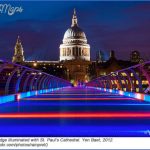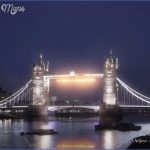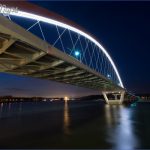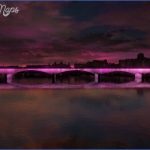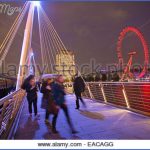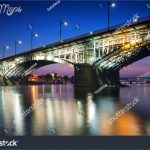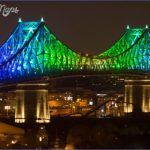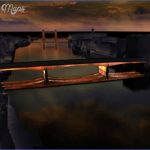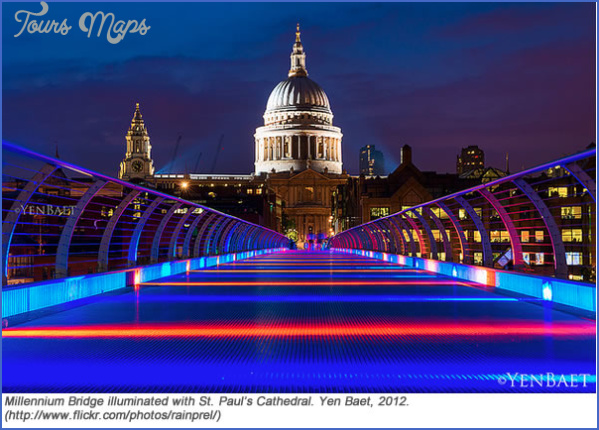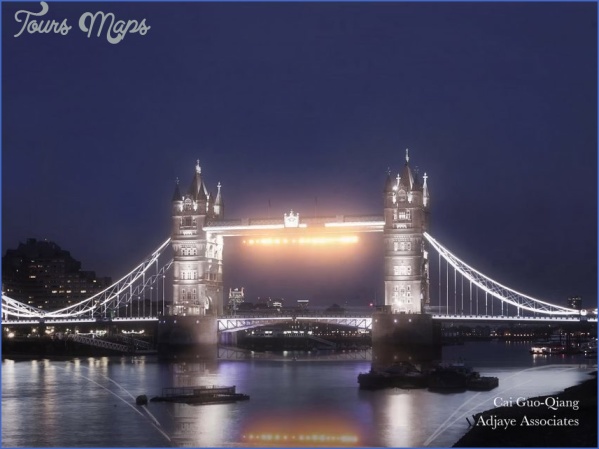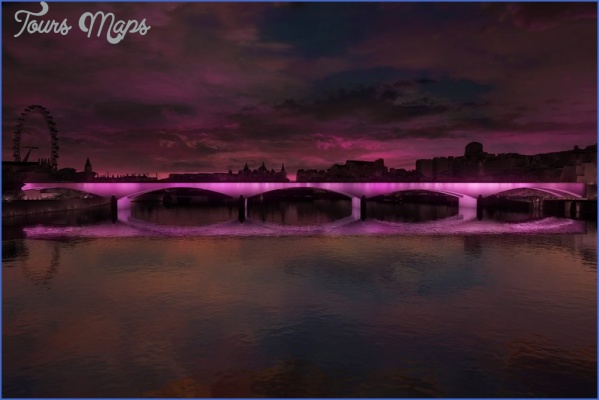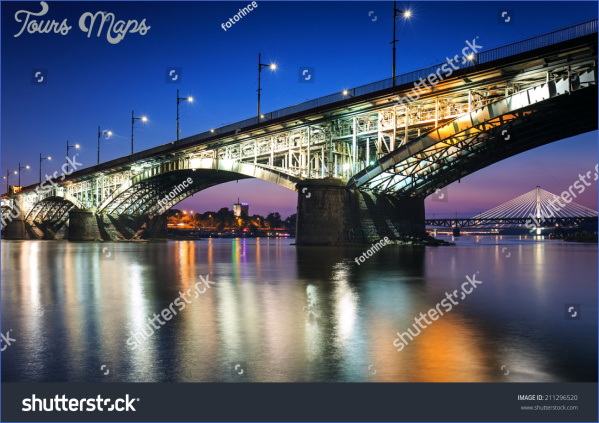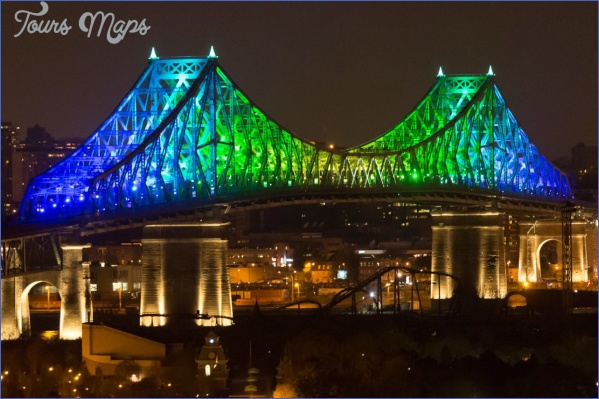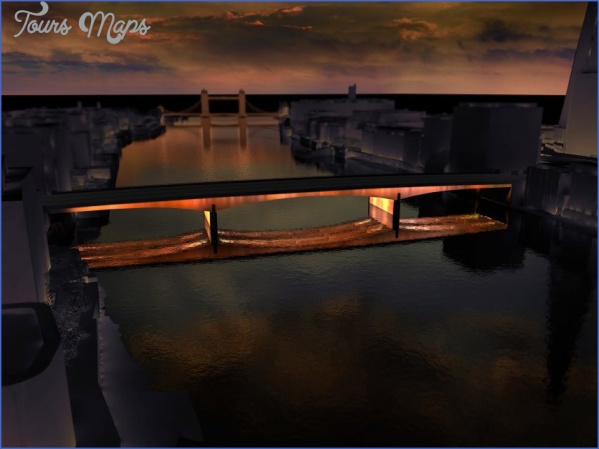BRIDGES ILLUMINATED
Domingo Gonzalez Associates developed the lighting for the Hudson River crossing that will replace the Tappan Zee Bridge, shown here in a rendering.
Lighting for the 3.1-mile (5 km-) long twin-span cable-stayed bridge highlights its eight distinctive angled towers and respects its historic Hudson Valley location.
The bridge, scheduled to open in 2018, was designed by HDR and built by a joint venture comprised of Fluor, American Bridge, Granite Construction, and Traylor Brothers. Bridges, massive if not always ornamental landmarks, have been reborn in the past decade thanks to sophisticated lighting schemes. Lighting designers deploy various strategies to draw attention to a bridge, using light to wash its surfaces or to create sharp detail. By accentuating a bridge’s architectural features, designers can create visual awareness, confer iconicity on a more ordinary structure, and provide perceptual experiences that often evoke deep emotional responses.
Drawing on a seemingly limitless color palette, lighting options include special themes for international, national, and local events, such as holidays, sports celebrations, and political, social, and health advocacy. Illuminating bridges that have been designed in different eras and in disparate styles creates visual cohesion, underscoring both the beauty of existing infrastructure and its function within the larger urban fabric.
BRIDGES ILLUMINATED Photo Gallery
Bridge lighting came into its own with the evolution of LED (light-emitting diode) technology, which has a long life cycle and thus lower maintenance costs. LEDs emanate a uniform, driver-friendly cast and allow unlimited color and timing options at the push of a keypad. The introduction of LEDs caused a paradigm shift. Suddenly, everything was possible.
Bridge lighting must serve two masters. First, it must be functional, providing sufficient illumination to get people safely from point A to point B. Surprisingly, human beings don’t need a lot of light to feel safe. Mark Major of the lighting design firm Speirs + Major points out that bridges, often in very dark locations, can use illumination to great effect, given that the eye can adapt to lighting anywhere between 100,000 lux (bright sunlight) and less than 1 lux (moonlight). Second, lighting must create a memorable identity for the bridge. Major divides bridge owners into three camps: those who don’t want to pay for anything other than functional lighting; “overlighters,” who want a bridge to put on a performance (not always a good idea); and those who are willing to balance safety requirements with pleasing aesthetics.
It was a short leap from lighting one bridge to synchronizing the lighting of a dozen or more spans. The cities of London and New York are the first to take up the torch. The Illuminated River Foundation sponsored The Illuminated River, an international competition to create a unified, permanent lighting scheme for seventeen bridges in central London. Proposals poured in, with six teams shortlisted at the end of 2016. Current, the winning scheme, was conceived by the American light sculptor Leo Villareal and British architects and planners Lifschutz Davidson Sandilands. The designers strove for simplicity and sensitivity to the Thames’s history and ecology. Their proposal reduces energy use, subtly rebalances ambient lighting on the river, and controls commercial
lighting on both banks. Lighting was installed in 2017, funded by private and philanthropic sources.
Not to be outdone, New York governor Andrew Cuomo announced in October 2016 that as part of a larger plan to retrofit New York City crossings with cashless tolling and improved seismic and security features, several bridges and tunnels will be illuminated. “The City That Never Sleeps” encompasses dusk-to-dawn lighting of all seven bridges and the two tunnels operated by the Metropolitan Transit Authority, as well as the George Washington Bridge, which the Port Authority of New York and New Jersey operates. The lights should be turned on in 2017.
I care a lot about darkness because if I didn’t, I wouldn’t be a very good lighting designer.
Maybe You Like Them Too
- Explore Doncaster, United Kingdom with this detailed map
- Explore Arroyito, Argentina with this Detailed Map
- Explore Belin, Romania with this detailed map
- Explore Almudévar, Spain with this detailed map
- Explore Aguarón, Spain with this detailed map

